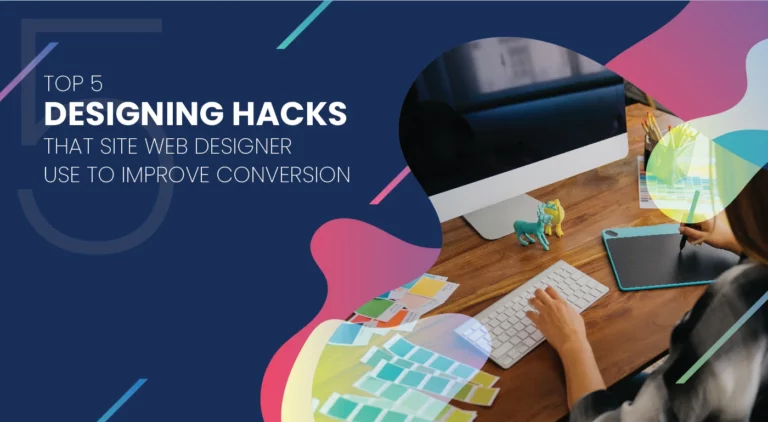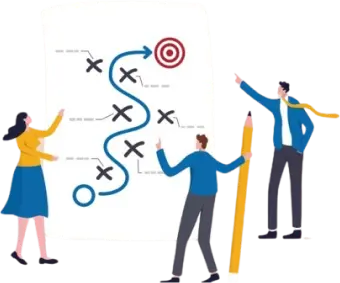29 Apr, 2022 | web page design
Top 5 Designing Hacks That Site Web Designer Use to Improve Conversion

-
Reasonable usage of negative space:
-
Choose the colour scheme wisely:
-
Make your site lively:
-
Addition of quality visuals:
-
Make your website design responsive:
Frequently Asked Questions
In order to improve your website's conversion rate, there are a number of design elements that should be taken into account. Research shows that usability, trustworthiness and consistency are all important to consider.
For increasing conversions in the United Kingdom, tailoring your UI/UX design to mobile devices is key. Research shows that mobile users persistently abandon websites if page loading takes too long - you should prioritize making sure your site is fully optimized for a mobile experience, with quick loading pages and a smooth user journey. As well as this, feature design elements such as heatmaps and customer feedback surveys to understand how customers are engaging with your site and make quick changes, when needed. Additionally, UK guidelines emphasize a vibrant, eye-catching color palette and large, easy-to-understand call-to-action buttons, which have seen an increase in click-through rates. Utilize A/B testing to measure the effectiveness of your efforts and you should be seeing higher conversions in no time!
When creating a website design, the focus should be on creating a user's journey that is accurate, efficient, and effective. Ensure that menus and navigation are as intuitive as possible, using familiar terminology and words known to the intended audience. Additionally, make sure all interactive elements are easy to find and use. Utilize colour to differentiate elements, and implement visual cues so users can easily find their way. Following the principles of minimalism helps keep the design clutter-free and allows important elements to stand out. Test the design for a user-friendly experience with friends and family, and don't be afraid to take their feedback back to your design. Finally, use analytics to regularly evaluate user behavior and make necessary improvements.
Finally, a consistent design across all webpages can make a crucial difference in conversion rates. Establish a colour palette, font selection, navigation hierarchy and graphical styling that feels cohesive, and remember to visually link related webpages in order to boost content discoverability.
One design-related challenge that we faced while improving conversion rates in the UK was ensuring customer convenience. Being a global company, we needed to provide our UK customers with a tailored experience by making sure our website was as intuitive and user-friendly as possible. We had to make sure our menus were simple and easy to understand, and that all information was cohesive and not overly complex. Additionally, we ran into some difficulty when arranging content and imagery on our product pages - ensuring that layout of the page was informative but uncluttered. As a result, we refined and rearranged all the content and images to make sure that customers could quickly and easily find the products they wanted.
1. Use A/B Testing: A/B testing is one of the most effective ways to increase your web page conversion rates. It provides web designers with the ability to optimize web page content and layout by making changes to elements such as colors, text, buttons and images to find out which version converts better. 2. Implement Live Chat: Providing access to a live chat system has become an increasingly popular way to increase website conversions. Live chats can be extremely helpful for potential customers, as it gives them an opportunity to ask questions in real-time. 3. Improve Navigation: When designing websites for visitors, a web designer should always make sure that visitors can find what they're looking for quickly and easily. If a website is difficult to navigate and doesn't have clear paths to important landing pages, visitors are more likely to become frustrated and leave the site. 4. Use Video: Adding video to a website can be extremely effective in increasing conversions. Video can help engage website visitors and explain complex products or services in a visual and entertaining way. 5. Improve Mobile Experience: Website designs that don’t follow best practices regarding mobile usability can hurt conversion rates.

